Carson McCullers, née Lula Carson Smith, was born in Georgia in 1917. As a young woman of the 1930s, she left the South to pursue a career in music—a passion she shared with one of her most famous heroines—and headed to Juilliard in New York City. Her pianist dreams were abandoned when, after a bout of illness, she discovered a penchant for the written word. Success was swift and major: A 19-year-old McCullers was first published in a 1936 issue of Story magazine, and she wrote her magnum opus, The Heart is a Lonely Hunter, four years later.
But not everything was rosy in McCullers' life. Just after her breakout debut, she suffered from a series of minor strokes, turned to alcohol, and entered a tempestuous, on-again-off-again marriage with a fellow writer. As McCullers gained a reputation as a master of Southern Gothic literature—and befriended Tennessee Williams and Truman Capote—her private life and health continued to deteriorate. In 1967, at the age of 50, she passed away.
Whatever you think of McCullers as an individual, it’s inarguable that she was an unrivaled literary talent. All of her work—whether they’re poems, essays, stories, or novels—display a deep empathy for the outsider, an understanding of human loneliness, and a fearlessness towards exploring “difficult” subjects. It was these characteristics of her writing that won over critics and readers during her lifetime, and beyond.

The Heart is a Lonely Hunter
McCullers was just 23 years old when The Heart is a Lonely Hunter received nearly-unanimous acclaim, catapulting her to literary stardom. Fans of Harper Lee’s To Kill A Mockingbird—which was published a decade later—will find some similarities between the two novels. The highlight is McCullers’ Scout-like protagonist Mick Kelly, a music-loving tomboy in 1930s Georgia. Mick is fascinated by John Singer—a deaf-mute and an almost mystical local figure—and this fascination connects her with other members of her town. Among them is diner owner Biff Brannon, the opinionated drunk Jake Blount, and Dr. Benedict Mady—a black man who dreams of a better future for his people. Their separate narratives form one central story about community, hope, love, and loneliness that is now one of the most beloved 20th century novels.
Related: 25 Books Like To Kill a Mockingbird
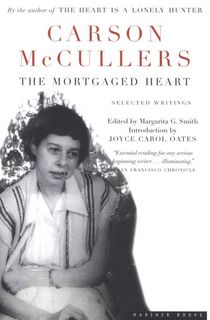
The Mortgaged Heart
The Mortgaged Heart is comprised of stories, poems, and essays that McCullers wrote in her late teens. Perhaps the most notable entry is “The Mute,” a story that eventually evolved into The Heart is a Lonely Hunter. But there are other enjoyable inclusions as well: "Wunkerkind," the story of a failing musical prodigy, was her first published work. “In Like That” sees a tomboy resist the restrictions imposed by her encroaching womanhood, while “Court in the West Eighties” features a Rear Window-esque plot in which a woman observes her neighbors from afar. Altogether, the collection offers a glimpse of McCullers’ earliest writing days, innate talent, and affinity for outsider heroes and heroines.
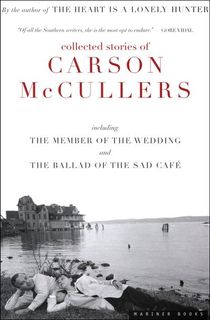
Collected Stories of Carson McCullers
This collection also includes a variety of McCullers stories, but the standouts are the much-loved “The Member of the Wedding” and “The Ballad of the Sad Cafe.” The former is a heartwarming coming-of-age tale about 12-year-old Frankie, whose obsession with her brother’s wedding stems from her own restlessness and loneliness. The latter follows the goings-on of a Southern cafe, with its owner—the formidable Miss Amelia—as its centerpiece. Both novellas are essential parts of the McCullers canon, and represent some of her best, most affecting work.
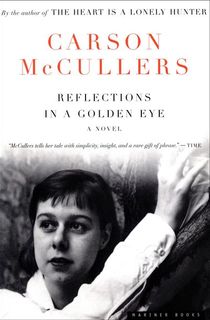
Reflections in a Golden Eye
By the time Carson started Reflections in a Golden Eye, her health had taken a turn for the worse. Originally a Harper’s Bazaar serial, it found a formal publisher in 1941, following the success of The Heart is a Lonely Hunter. Unfortunately, some critics felt it didn’t live up to its predecessor, while others were scandalized by its content: The book revolves around Captain Weldon Penderton, a closeted bisexual living with his adulterous wife, Leonora, on a Georgia military base. The added fact that Penderton is secretly in love with Leonora’s lover—another captain with his own set of issues—only complicates things further. Penderton's repressed and unfulfilled sexual desires mirror the unrequited female loves of Carson's own life.
Despite its lukewarm reception, Reflections in a Golden Eye got the silver screen treatment in 1967, with Marlon Brando and Elizabeth Taylor as the leads.
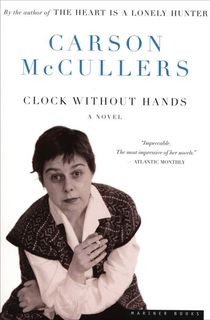
Clock Without Hands
McCullers’ final novel, Clock Without Hands has some echoes of The Heart is a Lonely Hunter. Once again, she sets her story in a small Georgia town, where one individual—black newcomer Sherman Pew—is the link between a cast of downtrodden and lonely characters. Pew’s arrival drives some to destruction and others towards redemption, as each man wrangles with his own private demons and obsessions. The Atlantic hailed it as a “masterly” look at Civil War-era South and, according to McCullers, is a story “about response and responsibility of man toward his own livingness."
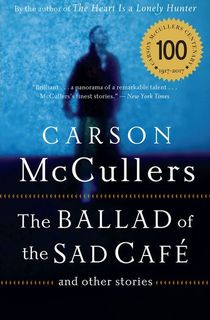
The Ballad of the Sad Cafe
Decades after its publication in 1951, The Ballad of the Sad Café and Other Stories is still hailed as one of the most powerful works of Southern literature, compiling McCuller’s greatest stories into one stunning collection.
The eponymous novella follows Miss Amelia, an eccentric and vigorous woman whose formidable presence, not to mention previous marriage to a troubled convict, have made her something of an outcast in her small Georgia mill town. That all changes when a stranger enters her general store and wins affection from her no one knew she was capable of. Her newfound affability and conformity eventually earns her the camaraderie of the townsfolk, raising her happiness to greater heights than she ever thought possible—and priming her for a harder fall.
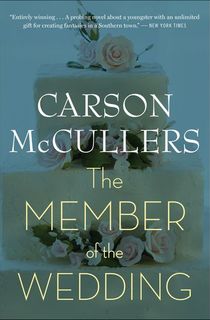
The Member of the Wedding
The opens on the protagonist, twelve-year-old “tomboy” Frankie Addams, in a liminal stage of her youth. It is late summer in the South, hot and stagnant, and Frankie feels a pervasive sense of boredom with her life and its offerings. That all changes when her brother, Jarvis, returns home from the army with news that he is engaged to be married. Frankie’s zeal for the union borders on obsessive as she sees in it an opportunity to be part of something greater than herself, taking an excessive role in the festivities and even hoping to escape her small town by joining the couple on their honeymoon.
The Member of the Wedding is a simultaneously endearing and unsettling account of a young girl’s growing pains that unfolds largely through conversations with members of her household. In 1950, McCullers it adapted it for a Broadway production directed by Howard Clurman, and it has since appeared in numerous film and stage adaptations.
Featured photo: Cover of the 2000 edition of "The Heart is a Lonely Hunter"

